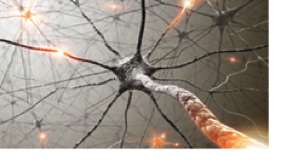Neurons that Fire Together Wire Together
Neurons that Fire Together Wire Together
Neuroscientists note that neurons that fire together usually wire together. Neural networks grow based on use. Myelination occurs as these networks continue to be used. Neural systems that are used grow and develop, while those that go unused wither and decay. Consider the neural networks that develop when we ask young children to endure long hours of rigidly paced instruction which is overly difficult, and which puts them into the frustration zone.
The best teachers have long understood that a little bit of challenge makes learning motivating and interesting for children, but too much difficulty my cause students to demotivate and disengage. Their observations support the research which has sought to quantify the level of challenge which maximizes learning. For complex learning tasks, a very high rate of success is needed to maintain motivation, attention, and the highest rates of learning. Gickling and Armstrong (1978) demonstrated the levels of sight-word recognition associated with the highest rates of learning to read.
And yet in recent decades schools have demanded that teachers cover more content at a quicker and with younger children than ever before. The demand for better educational outcomes was met by a teach more, teach harder, teach faster response. Content expectations in the early grades grew to non-viable levels. Scripted and rigidly paced learning programs proliferated, in which all students were expected to learn the same material in the same time in the same way. This instructional design took little notice of the different learning levels of children, or the need for children to spend time learning within their instructional and independent learning zones.
Children in the first years of learning reading and math have been frustrated, many beyond likely hope of change. These beautiful brains, exposed enough to a combination of reading activities and frustration, developed neural networks that combine fear and failure with the act of reading. These negative neural networks became hard-wired, myelinated, and will likely endure for the rest of their lives.
Compared to children in higher performing countries, our children are expected to “cover” more content while moving, playing, and socializing less. They spend far more time working in a frustration zone. Sadly, 67% of American children are scoring below proficient reading levels at the beginning of 4th grade on the National Assessment of Educational Progress reading test. Of these, 34% read at the basic level and 33% read at the below basic level. Tragically, 83% of children in low-income families (Hernandez, 2011) have reading skills below the proficient level.

Once formed, neural networks that associate fear and frustration with the learning of reading and/or math are likely to linger forever. What if instead, more of our children wired strong connections between reading and joy, writing and beauty, number concepts and discovery?


